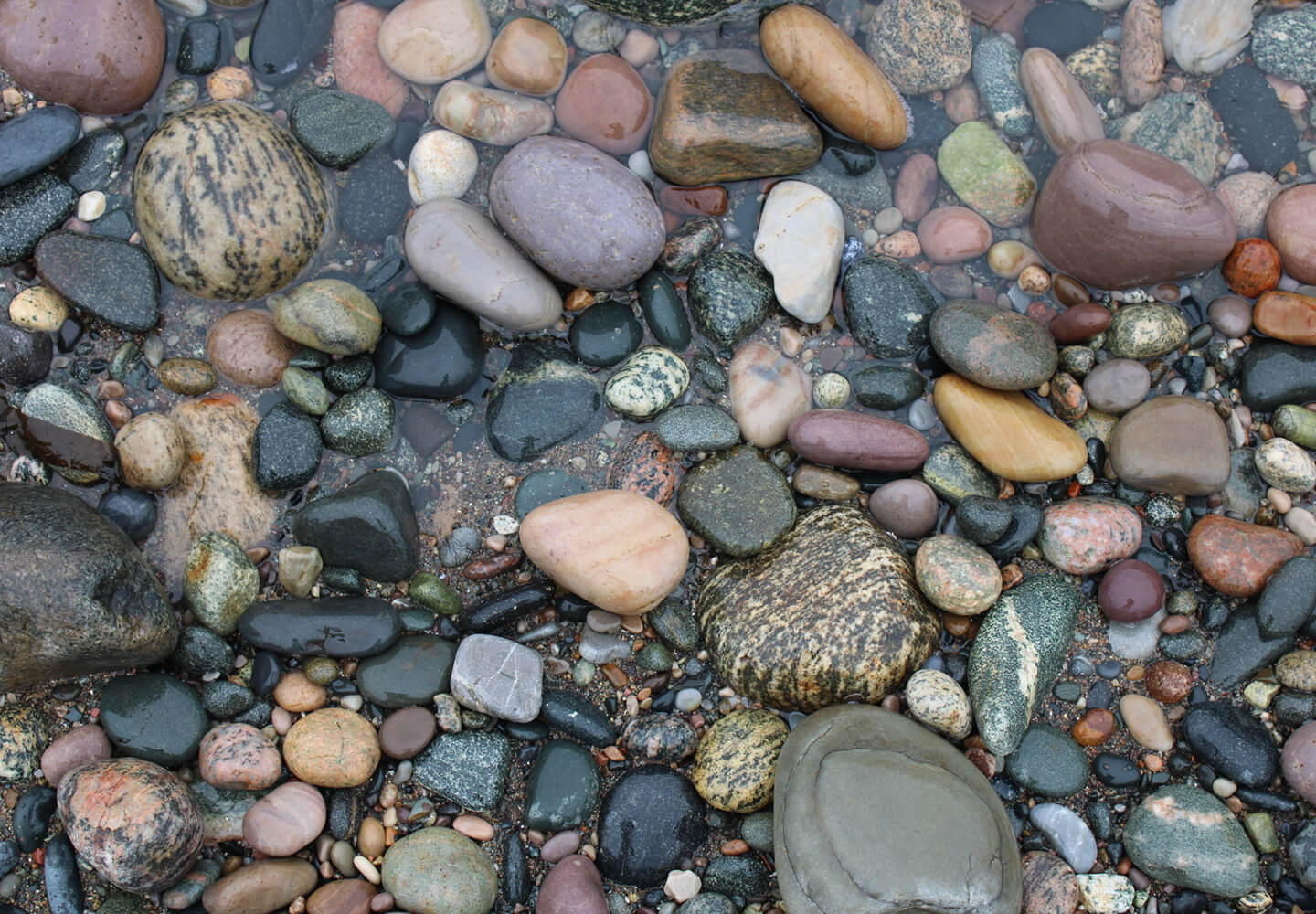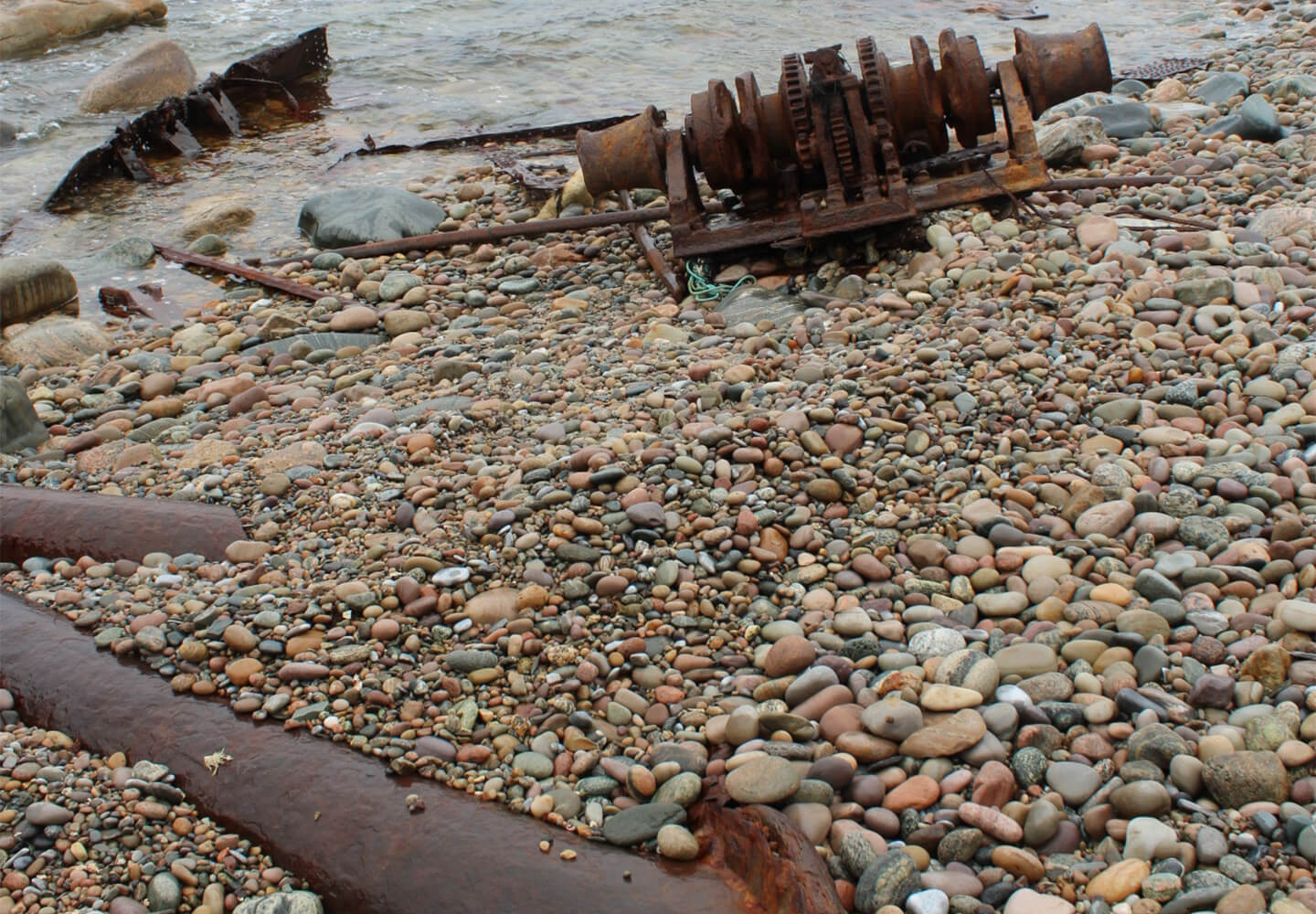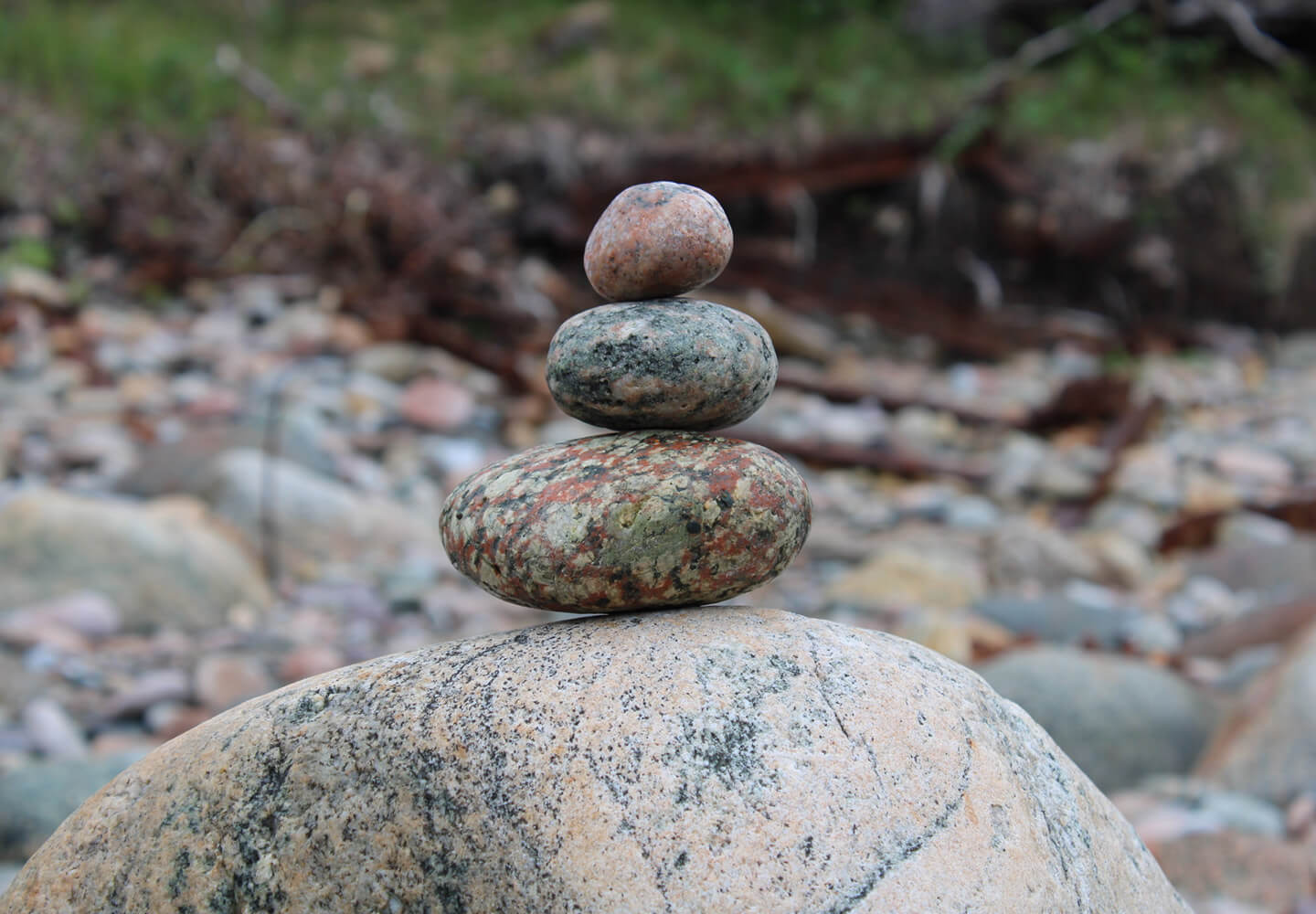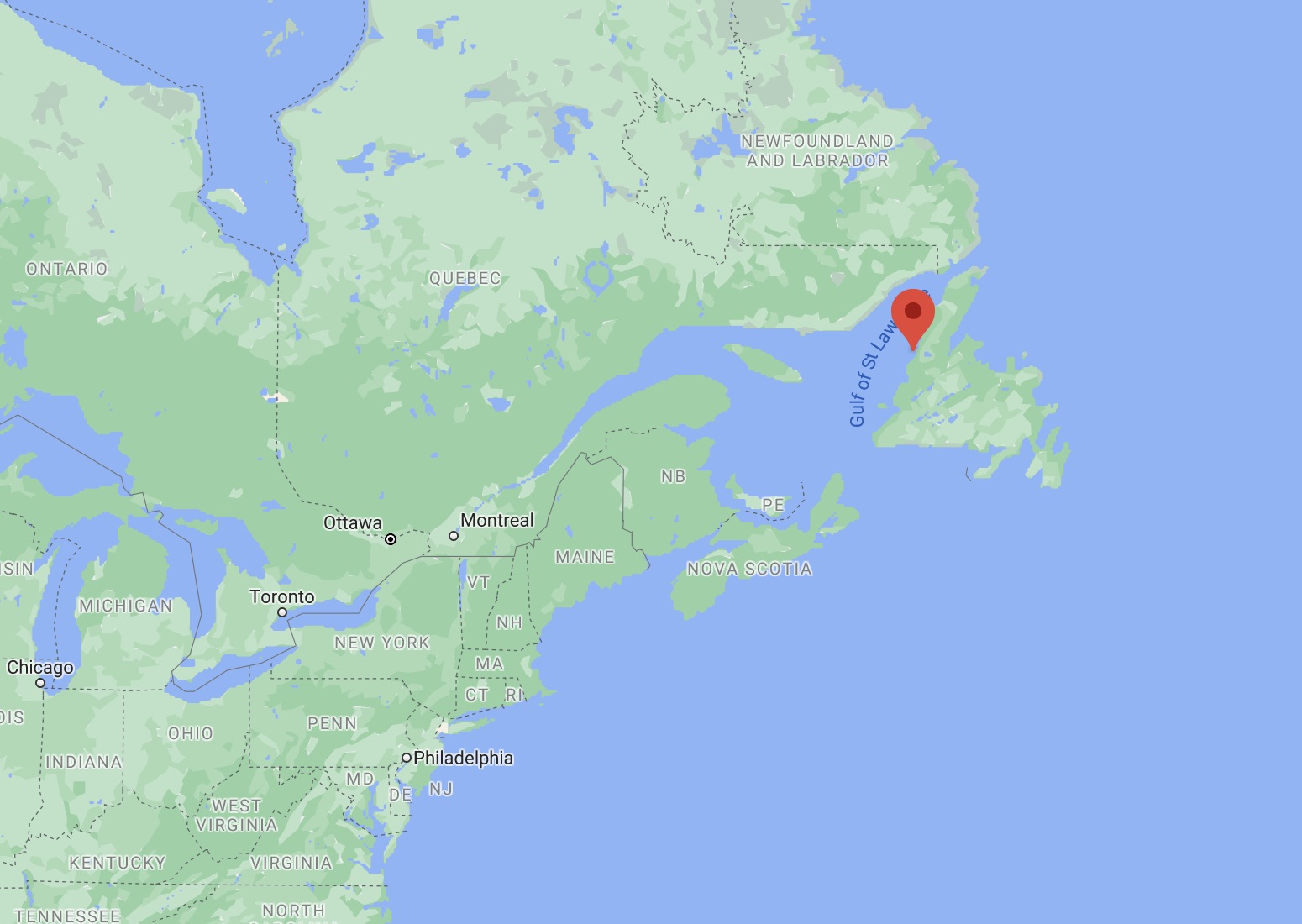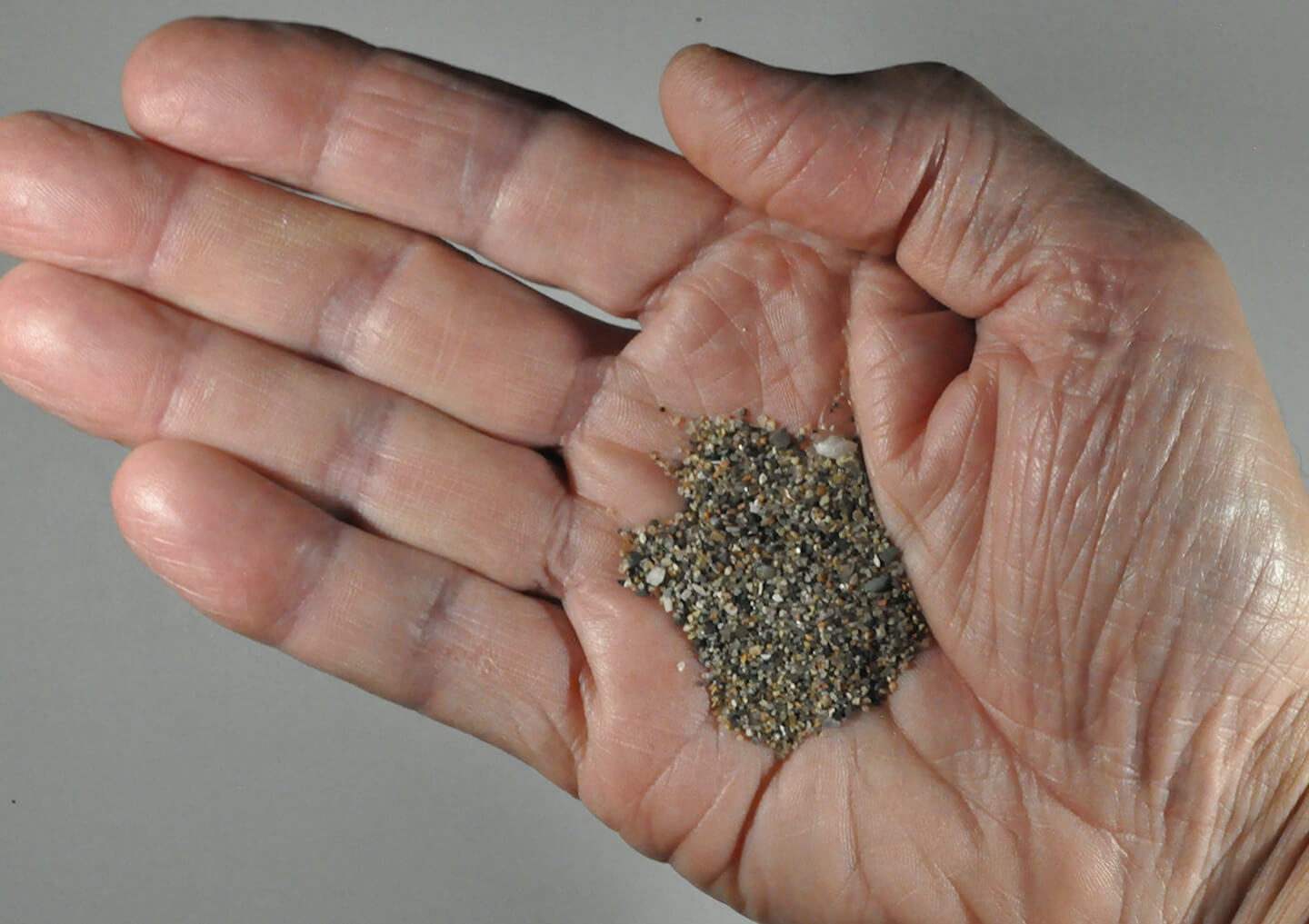
The west coast of Newfoundland with its 550-million-year-old volcanic and sedimentary rock is home to some of the oldest rocks in the world. This area is a visible example of the obduction process of plate tectonics. Its Gros Morne National Park is the only area on earth where deep ocean crusts of the earth’s mantle are exposed and seen as cool, crystallized basalt, gabbro and ultramafic rock.
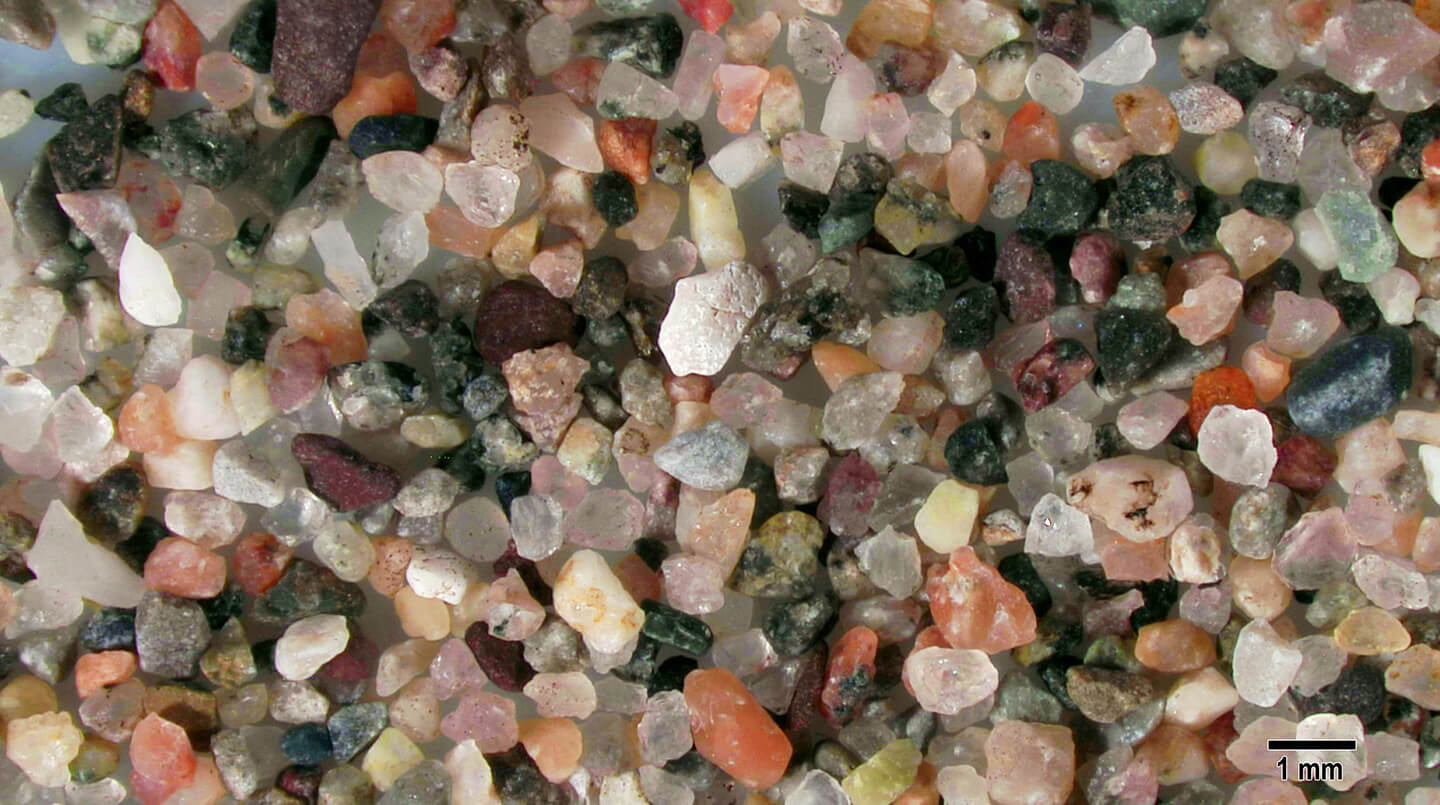
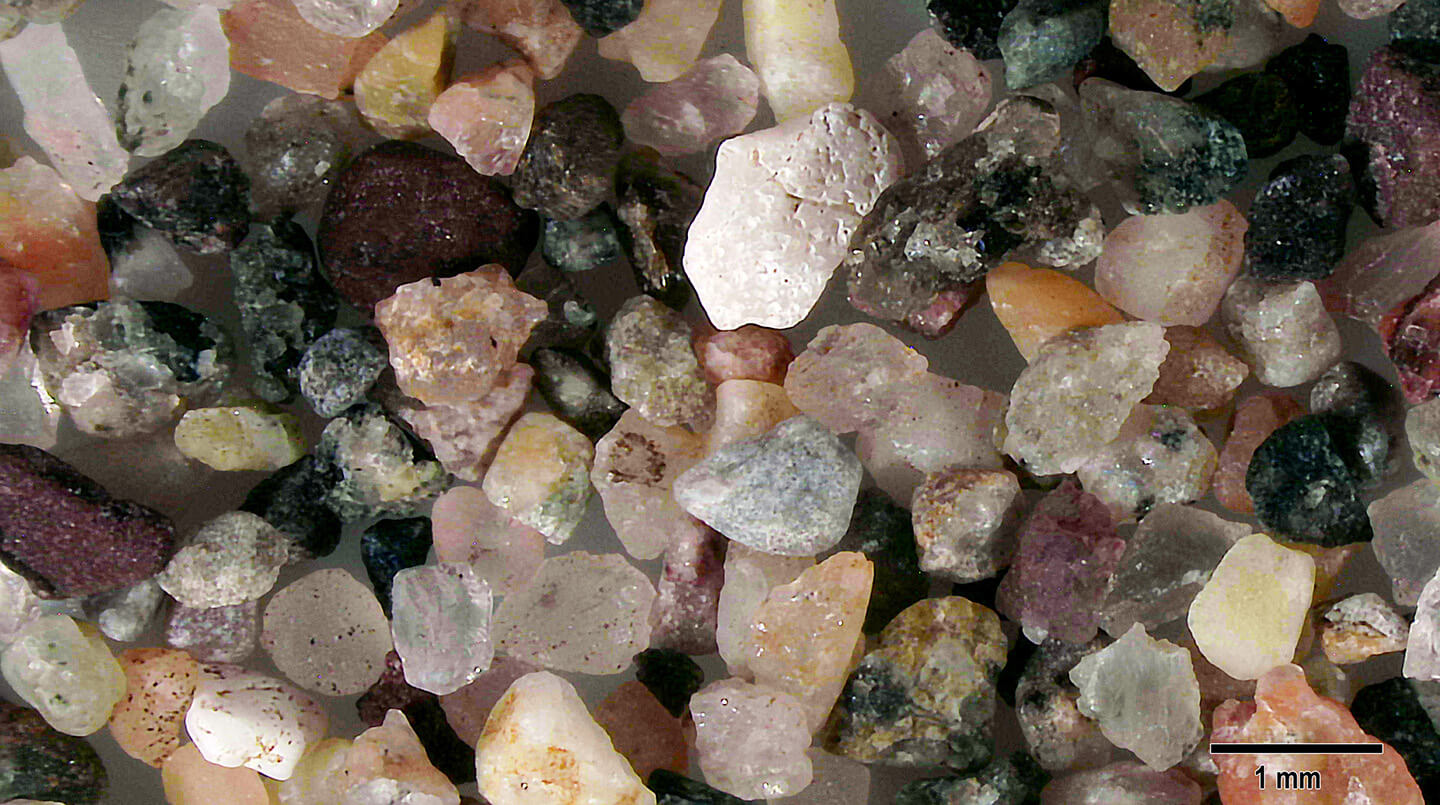
A colorful mixture of primarily igneous and metamorphic sand grains including clear and pink quartz. Note the centrally located finely pitted chalky white shell fragment.
Geographic Overview
Sally’s Cove is a small inlet on west coast of Newfoundland with rocky beaches consisting of rocks and stones of varying sizes and colors. This small fishing community is a Gros Morne National Park enclave with a population of 20 in 2016. Because of its unique landscape Gros Morne National Park was named a UNESCO World Heritage site in 1987. Sally’s Cove is named for Sally Short who with her children was wrecked here and took shelter here after leaving her husband.
Sand Gallery
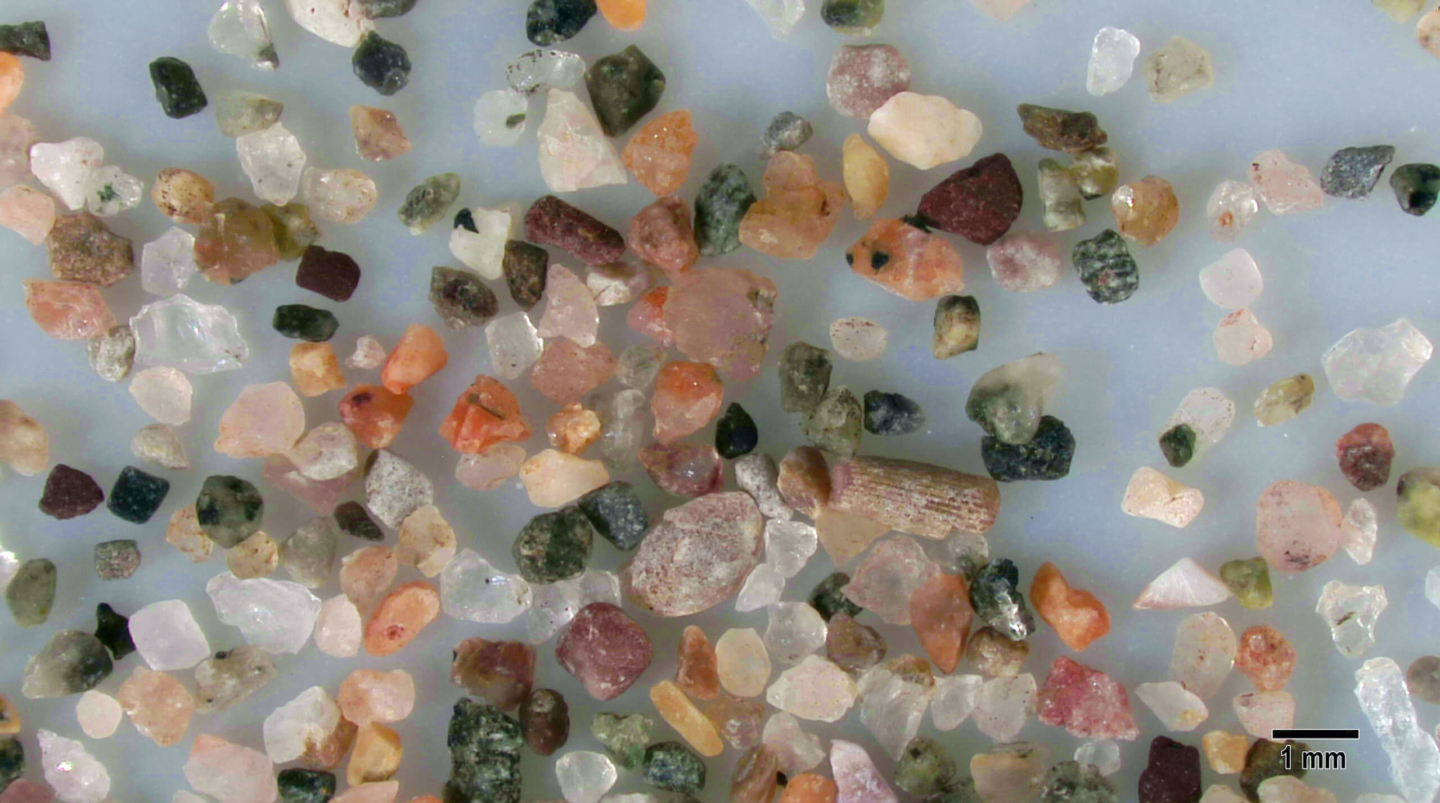
Mixture of primarily terrigenous sand grains. The elongated sand grain with linear grooves near the center is a biogenic fragment from a sea urchin spine.
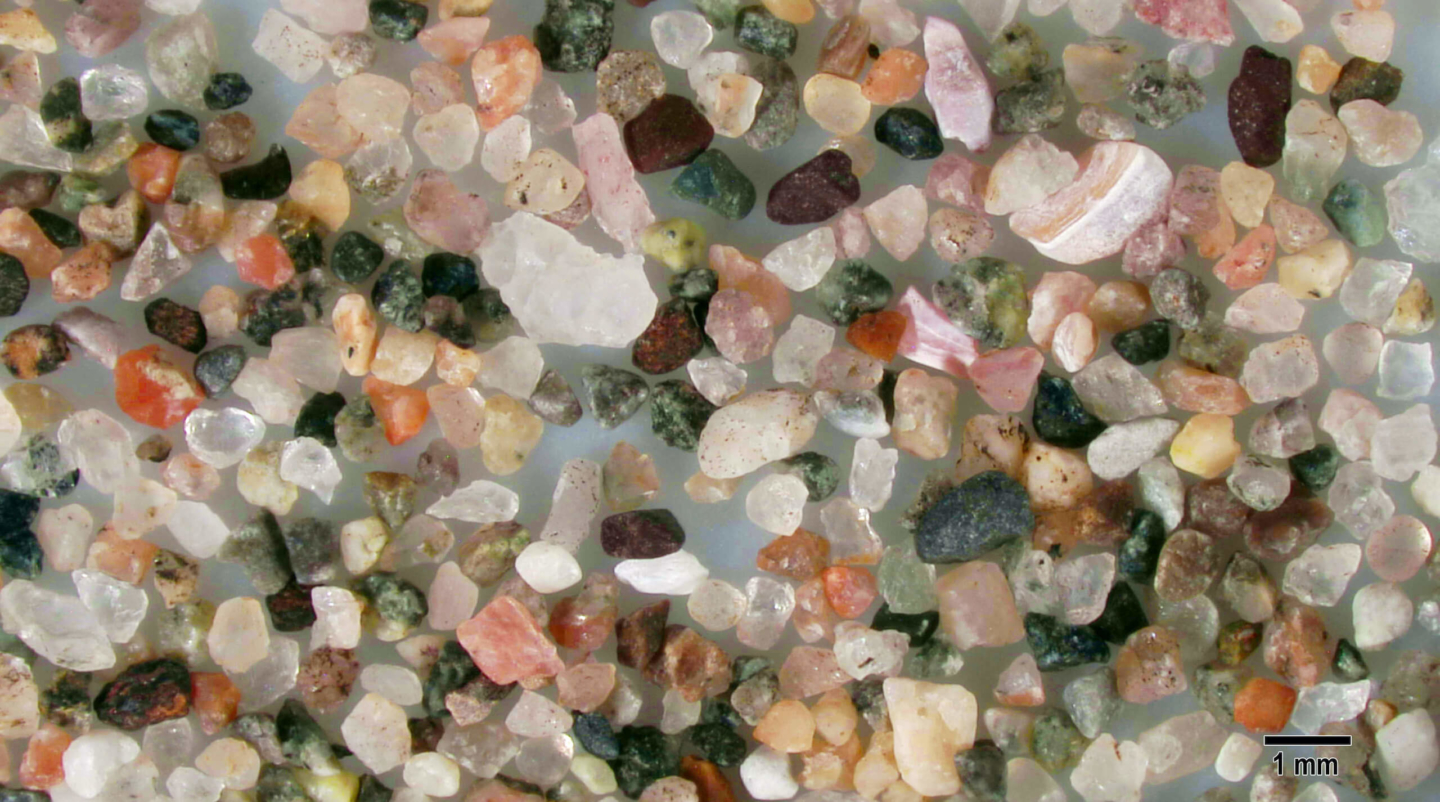
White & tan and white & pink shell fragments with linear markings are located to the upper right of center. Clear quartz and a colorful mixture of non-biogenic orange, brown and green-black grains are abundant.
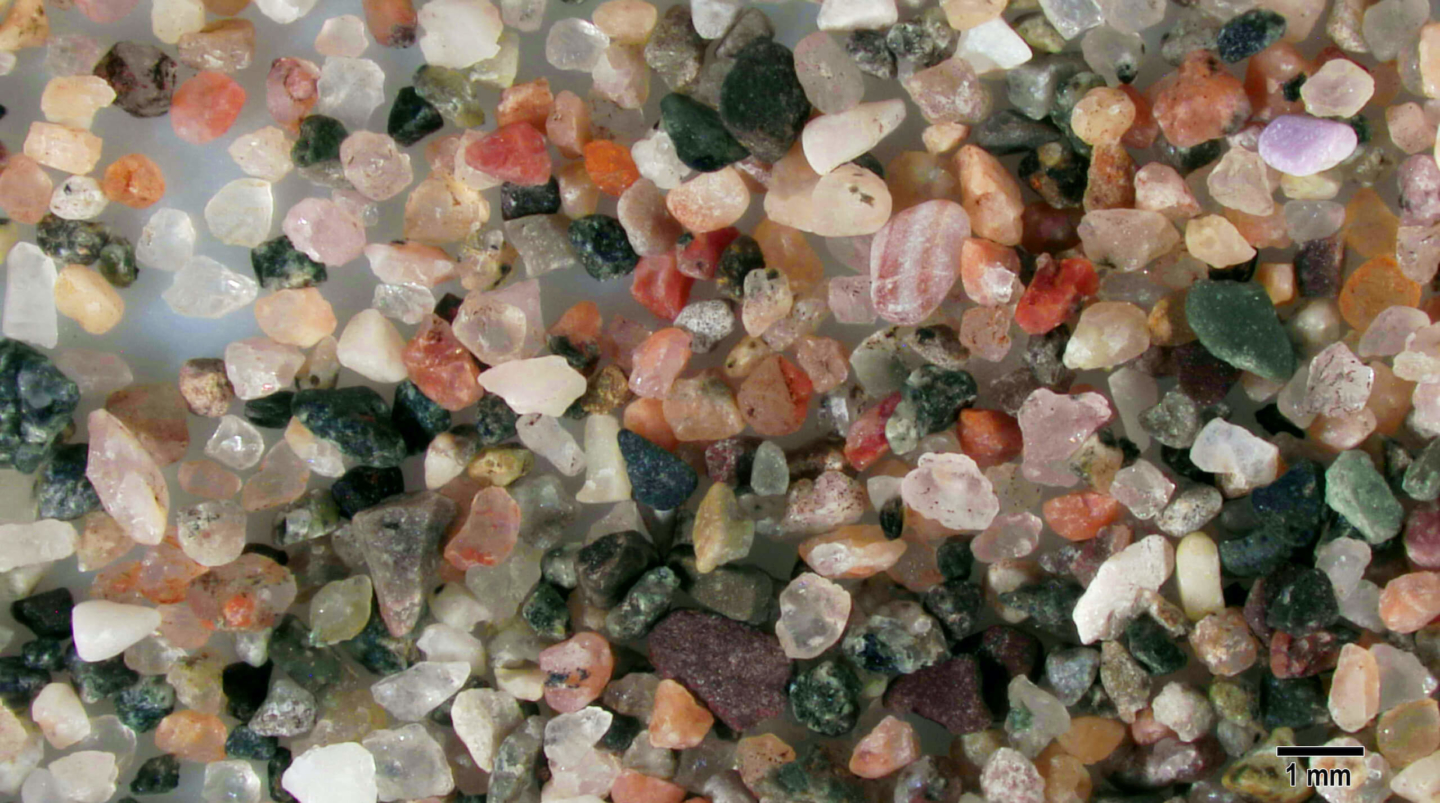
Mixture of colorful terrigenous and biogenic sand grains. A smoothly rounded shell fragment with pink linear markings is just to the right of center and light purple shell fragment is present near the upper right corner.
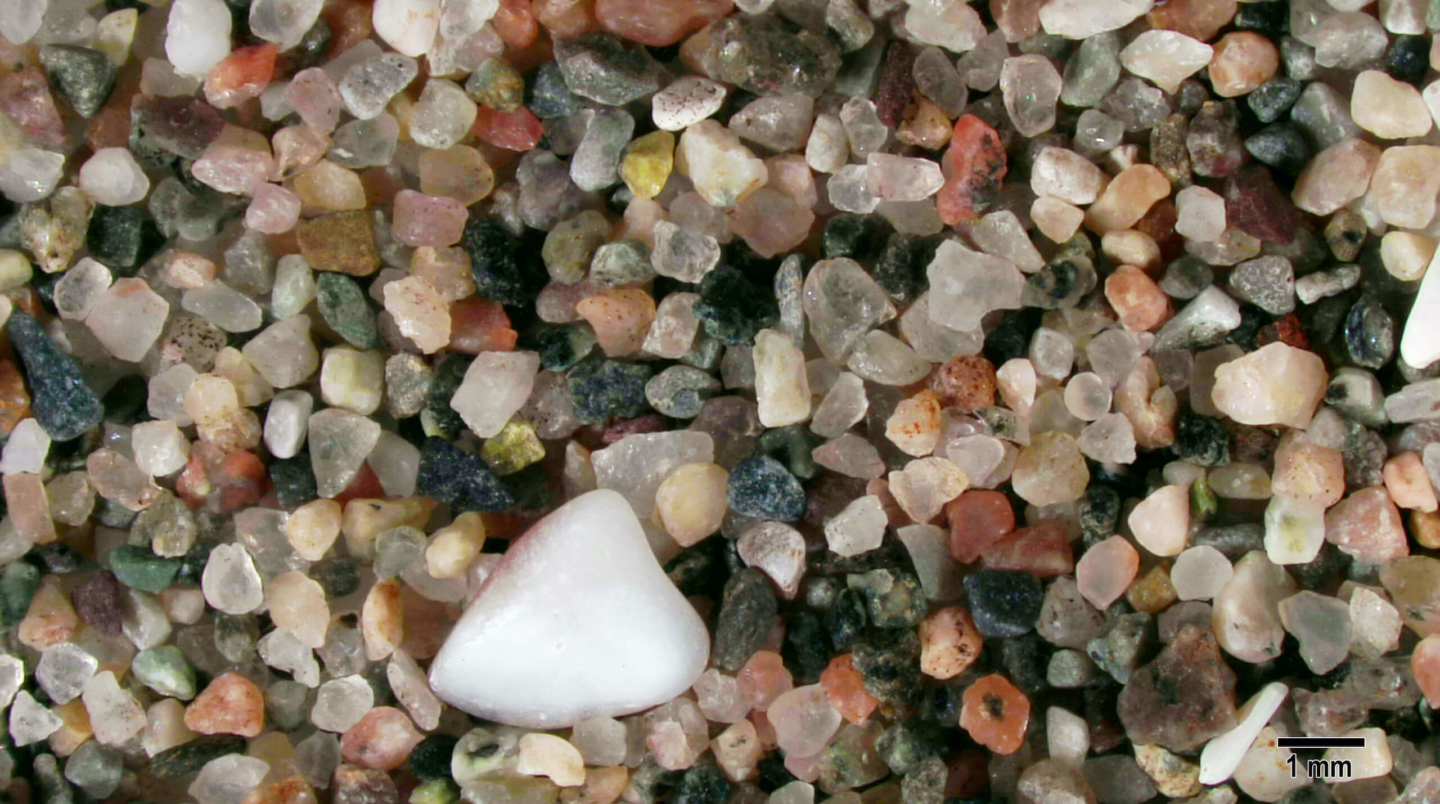
A large triangular white shell fragment with smooth edges is present at the bottom center. The remaining colorful smaller sand grains are primarily non-biogenic.
